Vivo Rio is a concert hall located in Aterro do Flamengo, Rio de Janeiro. The site is attached to the Museu de Arte Moderna (MAM) and was opened in November 2006.
Contents

Vivo Rio is a concert hall located in Aterro do Flamengo, Rio de Janeiro. The site is attached to the Museu de Arte Moderna (MAM) and was opened in November 2006.

Vivo Rio was created in a partnership between Grupo Tom Brasil and the mobile phone Vivo. The cost of the work was estimated at R$25 million and was the conclusion of Affonso Eduardo Reidy's architectural project, in the 1950s, at the Museu de Arte Moderna in Rio de Janeiro. [1]
The house was inaugurated on November 10, 2006, still with part of the structure to be assembled. [2] Gilberto Gil was the first artist to perform, with the special participation of Maria Rita, Adriana Calcanhoto and Sandy & Júnior in his concert. [2]
With a capacity for 4,000 people, divided between floor area (with 3,000 m2 [3] ), mezzanine booths and balcony seats, the house hosts concerts of national and foreign music, theater, dance and awards parties. Near Santos Dumont Airport, Vivo Rio also offers snack bars, an American bar, with waiters for all sectors and its own parking lot. Its address is Avenida Infante Dom Henrique, number 85, in the area of Aterro do Flamengo.
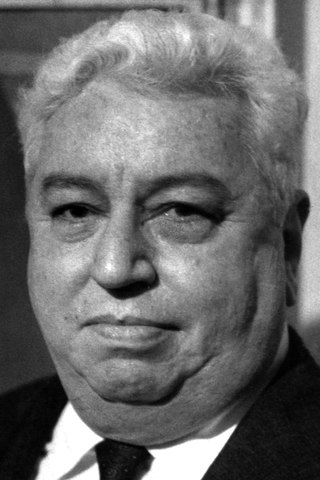
Emiliano Augusto Cavalcanti de Albuquerque Melo, known as Di Cavalcanti, was a Brazilian painter who sought to produce a form of Brazilian art free of any noticeable European influences. His wife was the painter Noêmia Mourão, who would be an inspiration in his works in the later 1930s.
Brígida Baltar was a Brazilian visual artist. Her work spanned across a wide range of mediums, including video, performance, installation, drawing, and sculpture. She was interested in capturing the ephemeral in her artwork.
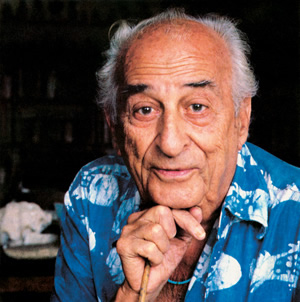
Héctor Julio Páride Bernabó was an Argentine-Brazilian artist, researcher, writer, historian and journalist. His nickname and artistic name, Carybé, a type of piranha, comes from his time in the scouts. He died of heart failure after the meeting of a candomblé community's lay board of directors, the Cruz Santa Opô Afonjá Society, of which he was a member.

The Gustavo Capanema Palace, also known architecturally as the Ministry of Education and Health Building, is a government office building in the Centro district of Rio de Janeiro, Brazil. As the first modernist project in Brazil, it is historically important to the architectural development of Modernism in Brazil and has been placed on Brazil's UNESCO tentative list.

Hélio Oiticica was a Brazilian visual artist, sculptor, painter, performance artist, and theorist, best known for his participation in the Neo-Concrete Movement, for his innovative use of color, and for what he later termed "environmental art", which included Parangolés and Penetrables, like the famous Tropicália. Oiticica was also a filmmaker and writer.

Flamengo Park, also known as Aterro do Flamengo, Eduardo Gomes Park, and Aterro do Brigadeiro Eduardo Gomes, is the largest public park and recreation area within the city of Rio de Janeiro, in eastern Brazil, and the largest urban seaside park in the world.
Roberto Cabot is a Brazilian visual artist.

Gretta Sarfaty, born Alegre Sarfaty, is also known as Gretta Grzywacz and Greta Sarfaty Marchant, also simply as Gretta. is a painter, photographer and multimedia artist who earned international acclaim in the 1970s, from her artistic works related to Body art and Feminism. Born in Greece, in 1947, she moved with her family to São Paulo in 1954, being naturalized as Brazilian.
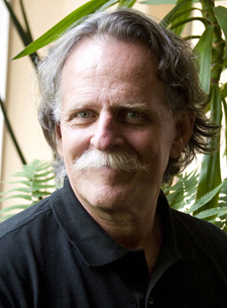
Claudio Edinger is a Brazilian photographer born in Rio de Janeiro in 1952. He lived in New York from 1976 to 1996.
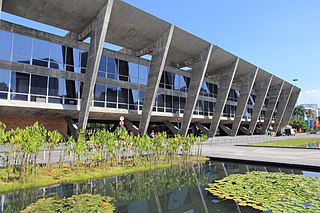
The Museum of Modern Art in Rio de Janeiro (MAM) is a museum located in northeastern Flamengo Park, in the city of Rio de Janeiro, Brazil. It is in the Centro district, west of Santos Dumont Airport, on Guanabara Bay.

The Monument to the Dead of World War II, also the Monument to the Brazilian Soldiers of World War II, popularly known as Monumento aos Pracinhas commemorates Brazil's participation and losses in the Second World War (WWII).
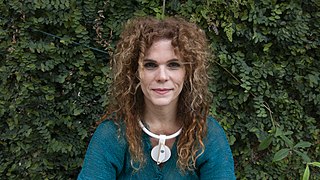
Laura Lima is a contemporary Brazilian artist who lives and works in Rio de Janeiro. Since the 1990s, Lima has discussed in her works the matter of alive beings, among other topics. Her works can be found in the collections of institutions such as Bonniers Konsthall, Stockholm, Sweden; Inhotim Institute, Brumadinho, Brazil; MAM - Museum of Modern Art, São Paulo, Brazil; Migros Museum für Gegenwartskunst, Zurich, Switzerland; Pinacoteca of the State of São Paulo, Brazil; Itaú Cultural, São Paulo, Brazil; Pampulha Museum of Art, Belo Horizonte, Brazil; National Museum of Fine Arts, Rio de Janeiro, Brazil; Hammer Museum, Los Angeles, USA; MASP - Museum of Art of São Paulo, Brazil, among others.
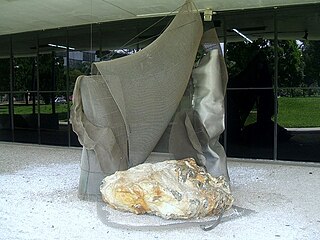
Iole Antunes de Freitas is a Brazilian sculptor, engraver, and installation artist who works in the field of contemporary art. Freitas began her career in the 1970s, participating in a group of artists in Milan, Italy linked to Body art. She used photography. In the 1980s, she returned to Brazil, but abandoned the human body as mediator of her work, adopting the "sculpture body". The artist uses materials such as wire, canvas, steel, copper, stone, and water to create her works.
Dudi Maia Rosa is a Brazilian artist.
Márcia Pinheiro de Oliveira was a Brazilian performer and visual artist. Her performances, videos and installations deal with themes of sexuality, eroticism, consumerism, childhood and religion, often using sex toys, children's toys and religious artifacts.
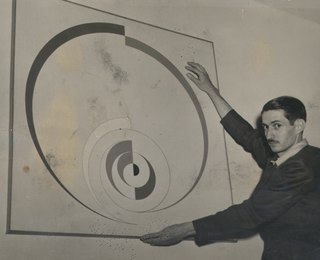
Ivan Ferreira Serpa was a Brazilian painter, draftsman, printmaker, designer, and educator active in the concrete art movement. Much of his work was in geometric abstractionism. He founded Grupo Frente, which included fellow artists Lygia Clark, Helio Oiticica, and Franz Weissmann, among others, and was known for mentoring many artists in Brazil.

Wanda Pimentel was a Brazilian painter, based in Rio de Janeiro, Brazil. Her work is distinguished by "a precise, hard-edge quality encompassing geometric lines and smooth surfaces in pieces that often defy categorization as abstract or figurative. “My studio is in my bedroom,” Pimentel said in an interview. “Everything has to be very neat. .. I work alone. I think my issues are the issues of our time: the lack of perspective for people, their alienation. The saddest thing is for people to be dominated by things.”

The Museum of Modern Art of Bahia is a modern art museum located in Salvador, Bahia, Brazil. It is located within Solar do Unhão, a historical site dating to the 16th century, on the margin of the Bay of All Saints. The museum was founded in 1960 under the architect Lina Bo Bardi (1914-1992) and initially located in the foyer of the Castro Alves Theater; it moved to its present location in 1963. MAM-BA is one of twelve state museums linked to the Institute of Artistic and Cultural Heritage (IPAC), an authority of the Department of Culture of the State of Bahia.
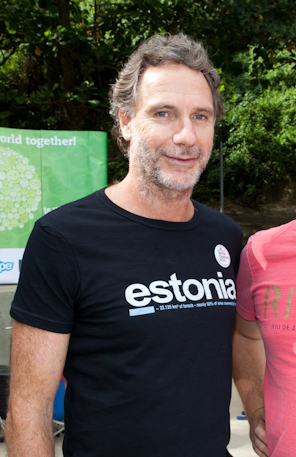
Oskar Metsavaht is a Brazilian artist, academic degree in medicine, fashion designer environmental activist and Amazon guardian. Oskar's work expresses the theme of preserving the forest, water and the empowerment and protection of the peoples of the forest, as an artist, designer and activist. He is founder and creative director of Osklen, a Brazilian fashion brand, recognized as one of the forerunners of the New Luxury concept that strives for the fusion between ethics and aesthetics and advocates conscious fashion through the adoption of sustainable practices. Creative Director of OM.art studio, where he hosts his art studio, an exhibition space and the studio for the development and production of art projects. Metsavaht serves as UNESCO Goodwill Ambassador. Creator of Janeiro Hotel, located in Leblon, Rio de Janeiro. He is also on the advisory board of the Inhotim Institute and board member of Museum of Modern Art (MAM) of Rio de Janeiro. In 2014, Oskar Metsavaht was awarded as Knight of Ordem do Mérito Cultural medal from the Ministry of Culture (Brazil) an honorary order granted by the Federal Government to personalities and institutions that make relevant contributions to Brazil's culture.

Niomar Moniz Sodré Bittencourt was a Brazilian journalist and businesswoman.